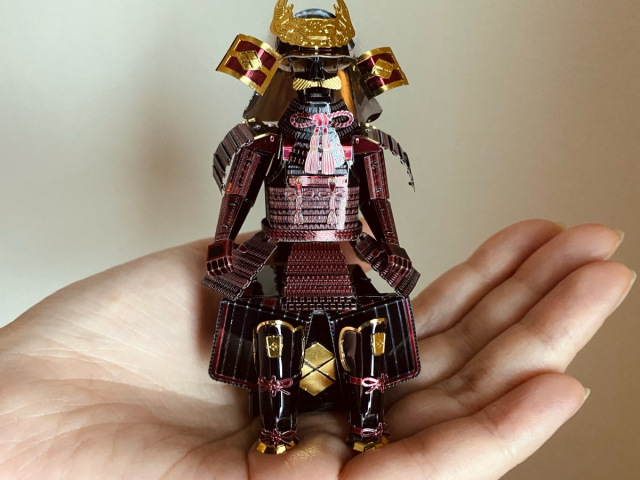
This palm-sized warrior tries our patience in all sorts of ways.
After trying our hand at making a model of a tiny Japanese oden stall last week, we were bitten by the bug of model-making and keen to expand our new-found skills with a more complex design.
That’s when we found Tenyo’s metallic nano-puzzle, which allows you to create realistic models using thin metal plates. Best known for their Star Wars series, which includes the Millennium Falcon and the AT-AT, the quality of Tenyo’s models are known to be excellent as they always place a high emphasis on realism in everything they produce.
What piqued our interest was the brand’s “armour” series, which lets you recreate the warrior armour of Japanese military commanders like Nobunaga Oda, Mitsuhide Akechi, and Hideyoshi Toyotomi. We chose to make the armour of Takeda Shingen, due to its wild-looking yak-hair helmet, called “Suwa Hosho no Kabuto“, the likes of which were worn by no other military commander.
▼ The “Takeda Shingen Armour” metallic nano-puzzle cost us 1,980 yen (US$19.12) plus tax.
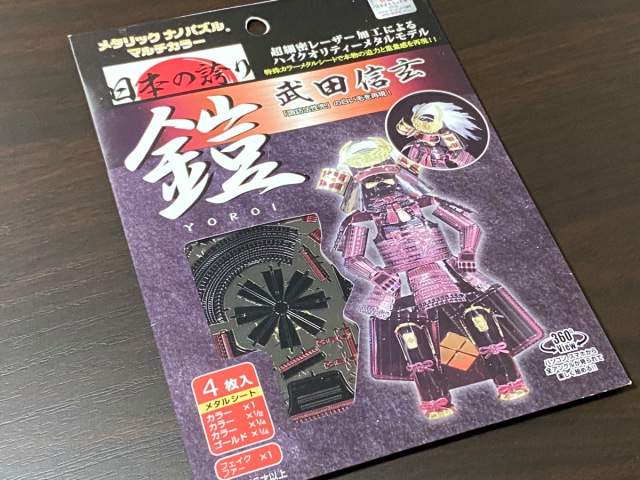
After we opened the set and took a look at all the metal pieces, we knew this wouldn’t be an easy task. However, at this point, we didn’t realise just how much mental stamina it would take to bring the powerful daimyo to life.
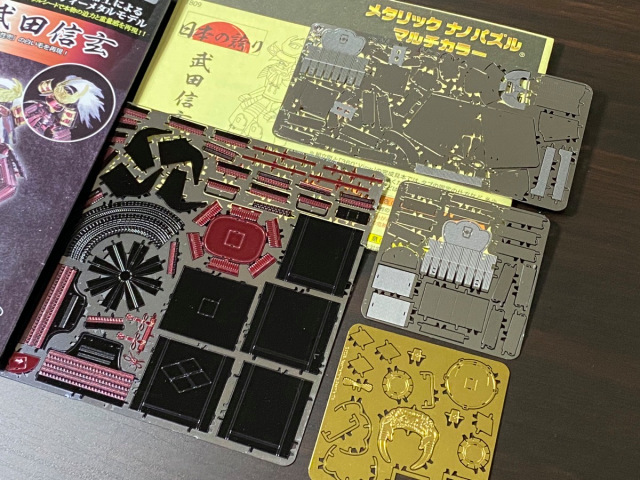
The parts for this model are laser-cut ultra-thin metal sheets, which are surprisingly easy to pop out with a few tugs and bends. It’s actually better to pull these out from the sheet rather than cut them, as it reduces the chance of cutting yourself on super sharp edges.
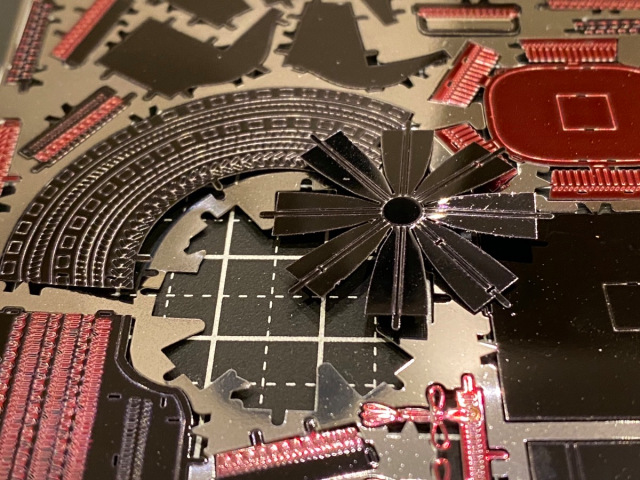
The metal sheets are pliable, in order to create curves that match the contours of the human body. The instructions are easy to understand too, so at this point, we thought we were in for an easy ride.
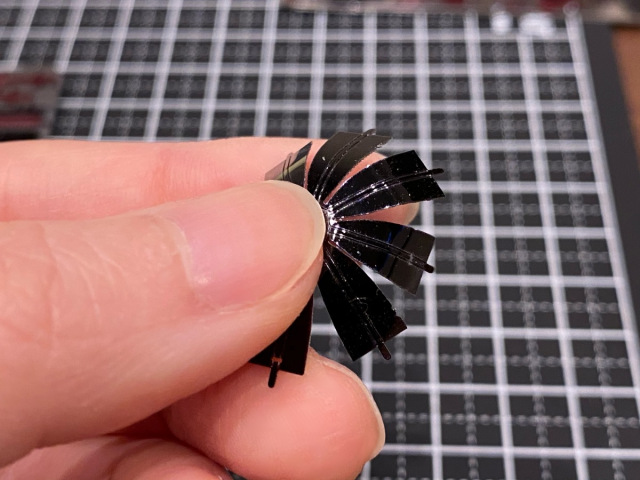
However, a lot of the parts were tiiiiiiny! Take a look at the size of this nose-piece next to a 10-yen coin, for example. It was probably only about two millimetres (0.08 inches) in size.

The nose-piece is flat, which means you have to fold it along the lines, insert it into the hole on the face mask, and delicately twist the hooks on the side to fix it into position. This turned out to be incredibly difficult, as the metal part won’t attach unless it’s held perfectly in the gap made for it, so we had to adjust the angle of the curve over and over again to get the hooks to stay in place.
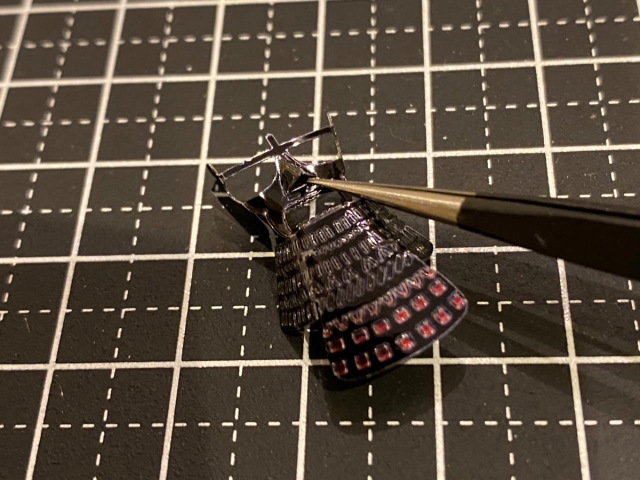
It requires confident movements to get it in, but you have to have a delicate hand at the same time to avoid crushing or breaking the tiny hooks, which are themselves less than one millimetre in size.
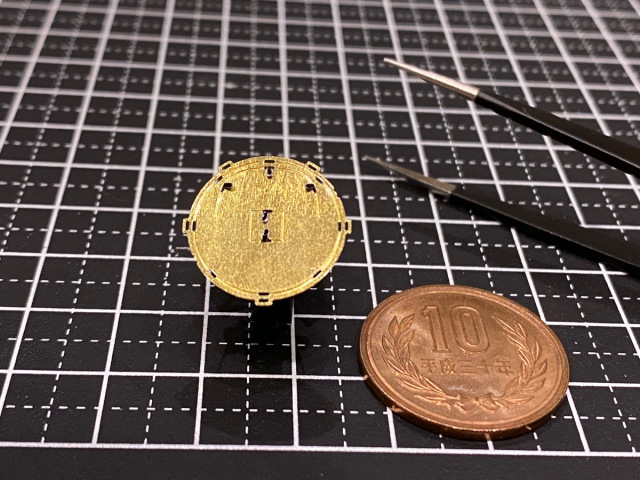
▼ We learnt this lesson the hard way, because we snapped some pieces off by accident and had to reattach them with glue.
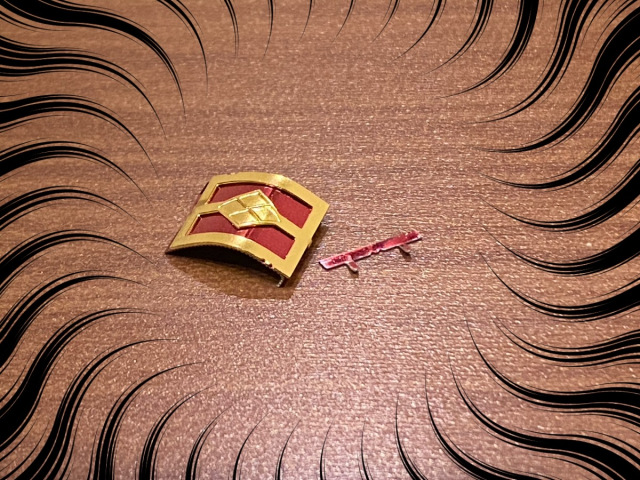
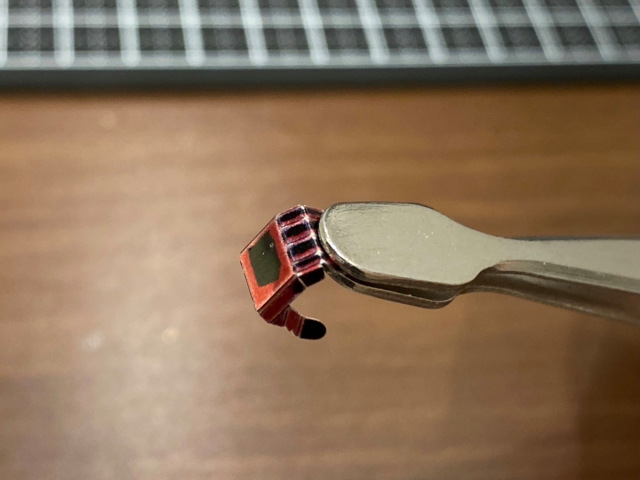
Still, inspired by the strength of the samurai warrior whose armour we were making, we carried on, clipping tiny sheets together to form the platelets that make up the Kusazuri, which protects the lower body and upper leg.
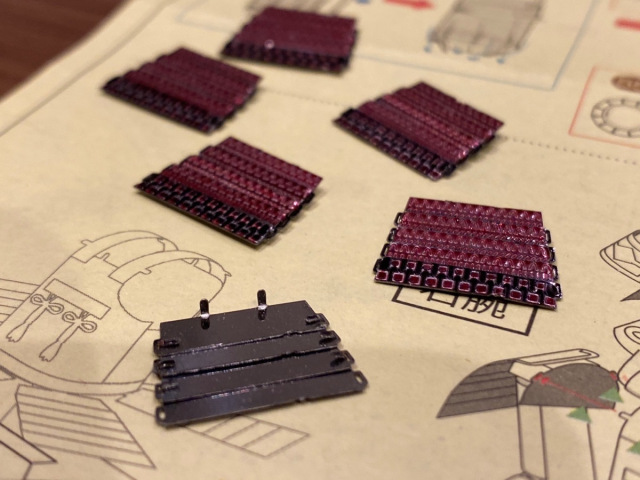
Once we had the knack of it, it didn’t take us long to finish making the dou (chest armour) as well.
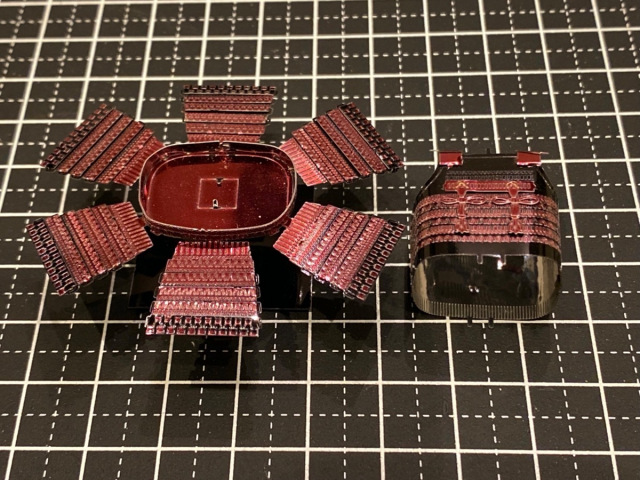
The steady-handed work continued, as we repeatedly made fine adjustments to the tiny pieces to bring different parts of the armour together.
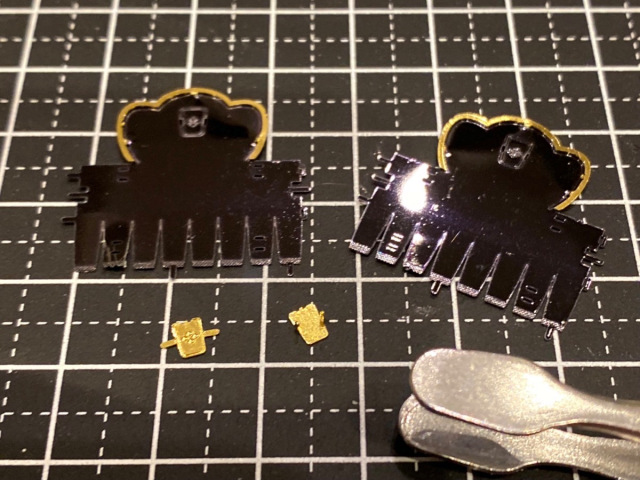
The precision of the parts is impressive and the details are elaborate, so much so that when it came time to put the main sections together, even we were blown away by just how amazing it looked!
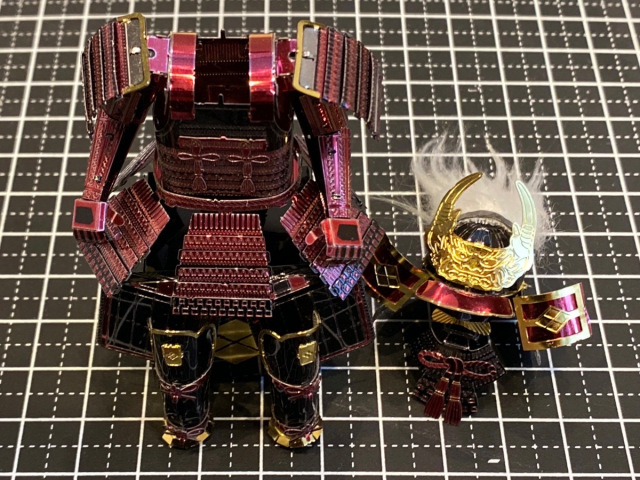
After three days — yes, THREE days — our little samurai armour was complete! Our fingertips and nails were tattered and ruined, but for a piece this stunning, it was definitely worth it.
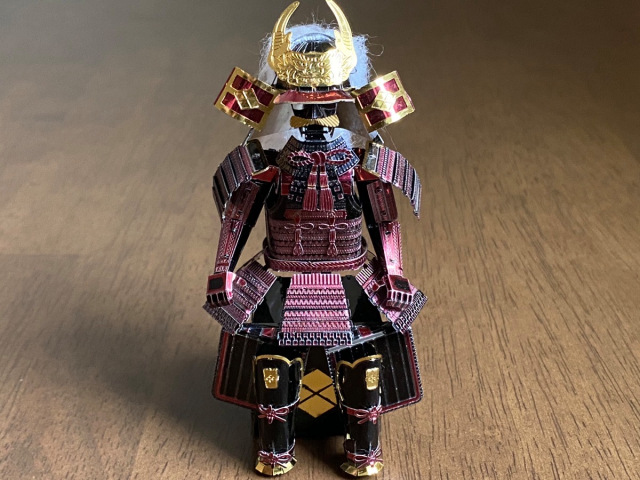
▼ The finish was insanely cool and the faux hair was perfect — it looked like something you’d see in a museum!

▼ The texture of the metal made it look like real armour.

Looking at the creation, we felt it had a mysterious aura to it, almost as if it were alive and breathing a ferociousness far removed from the world of human beings. The helmet in particular captured our attention, as the flowing white hair is said to represent the war god Suwa Myojin, with many believing it to be blessed by the god to provide its wearer with success in battle.
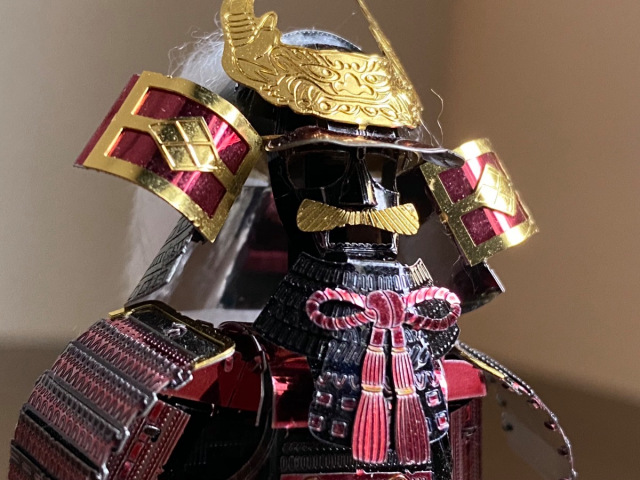
It wasn’t an easy road to create the miniature armour, but there’s a lot of joy that comes with its completion, so if you’re up for a rewarding challenge, we highly recommend giving it a try! Now it’s time for us to continue onwards and upwards with our model-making, so maybe one day we can make a miniature version of Tokyo as detailed as this one we saw earlier this year.
Photos © SoraNews24
● Want to hear about SoraNews24’s latest articles as soon as they’re published? Follow us on Facebook and Twitter!

No hay comentarios:
Publicar un comentario